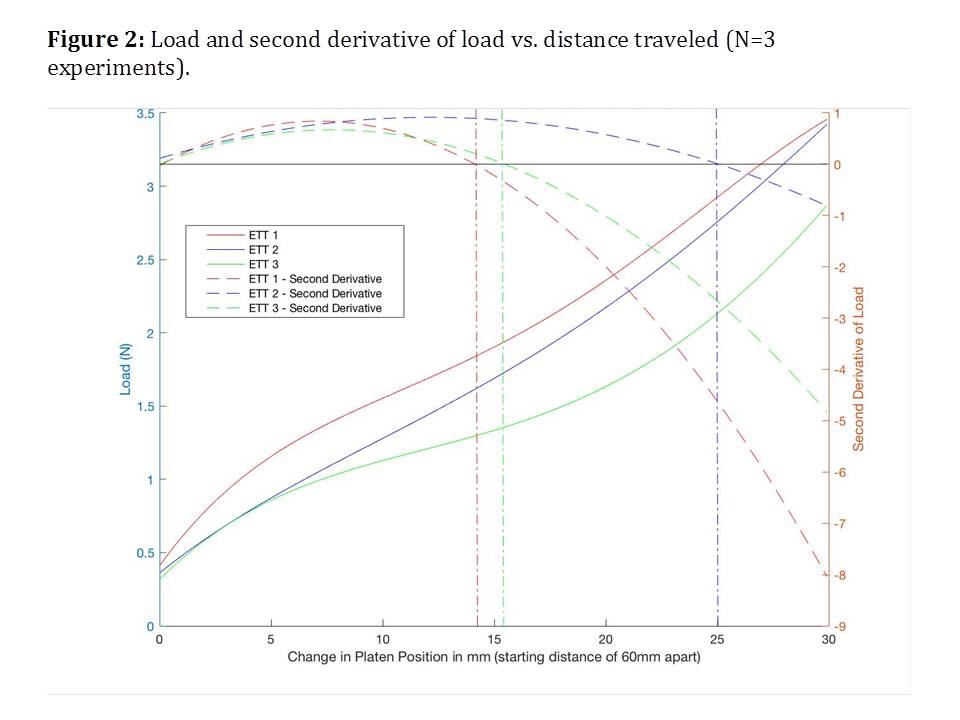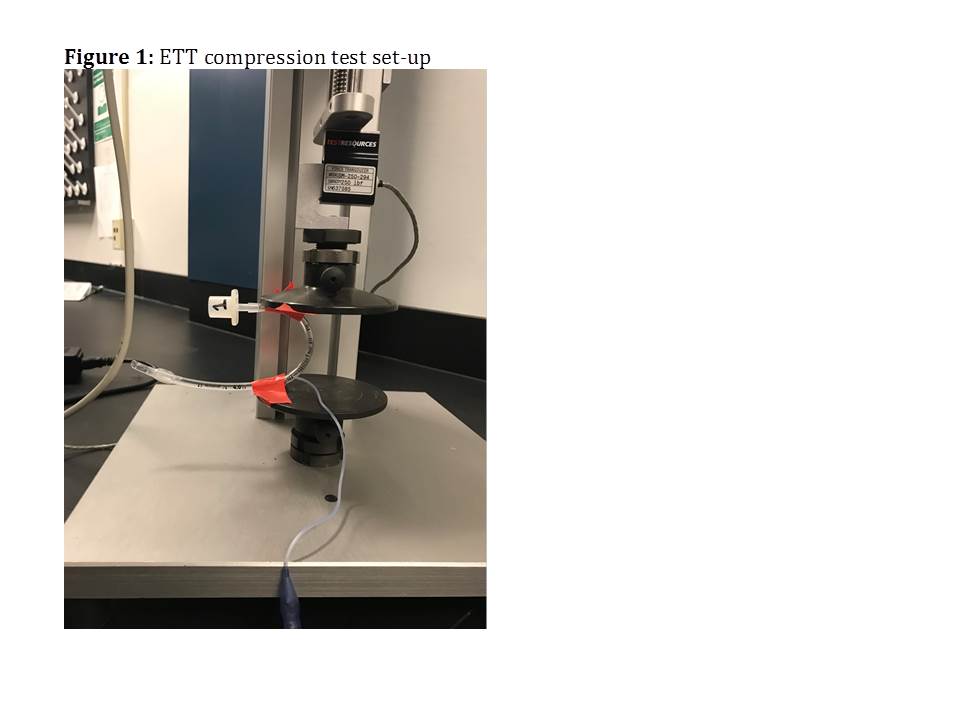NM-352
Mechanical Analysis of Endotracheal Tube Kinking
1Young E, 1Nocera T, 2Tumin D, 2Tobias J, 2D'Mello A
1Ohio State University, Columbus, OH, USA; 2Nationwide Children's Hospital, Columbus, OH, USA
Introduction: Endotracheal tube (ETT) malfunctions, such as kinking, can lead to procedural complications, physical injury to the patient, or even patient death. Previous reports have described manually kinking ETT tubes during in vitro experiments to determine the angle at which a kink occurs, the location of the kink, and the effects of a kink on ventilation. However, experimental protocols are lacking for testing ETT tubes in an objective and reproducible fashion. We sought to design an experimental setup for mechanical compression testing of ETT tubes that would permit better quantification of risks and outcomes of ETT kinking.
Methods: Mechanical compression testing of size 4.0 (inner diameter) oral ETTs (Kimberly Clark ETT, Microcuff) was conducted using a Universal Test Frame (Test Resources, model: 100Q250-6) with 1000N load cell and four inch compression platens. As shown in Figure 1, surgical tape was used to secure the ETT to the compression plates in a position simulating ETT placed in a supine patient. Compression was applied to the ETT at a constant rate of 60 mm/min, beginning at an initial plate distance of 60 mm. The load (N) on the device was plotted over the plates’ distance traveled (Δx), and the second derivative of the load (N’’) was obtained to identify a change in compression resistance signifying a kink in the ETT. Smoothed data from 3 experiments were plotted using MATLAB.
Results: Load data obtained from 3 ETTs (Figure 2) show a change in concavity, or N’’ = 0, between Δx = 15 mm to 25 mm, indicating that the ETT structural integrity is consistently compromised when a certain level of compression is applied in the experimental setup. In ongoing work, we will examine the sensitivity of this threshold to clinically relevant environmental conditions (e.g., temperature, prolonged force) and use this setup to evaluate airflow through a kinked ETT, to better characterize the impact of compromised ETT mechanical integrity on patient airways.
Discussion: We have established an objective experimental method for testing the mechanical integrity of ETTs. By creating a reproducible model of ETT kinking, we will be able to better define the risk of ETT kinking with various devices and conditions relevant to patient care.
References:
1. Hubler M. Anesth Analg 2006;103:1601-2.
2. Deepti BS et al. AANA J 2017;85:178-80.
Top













